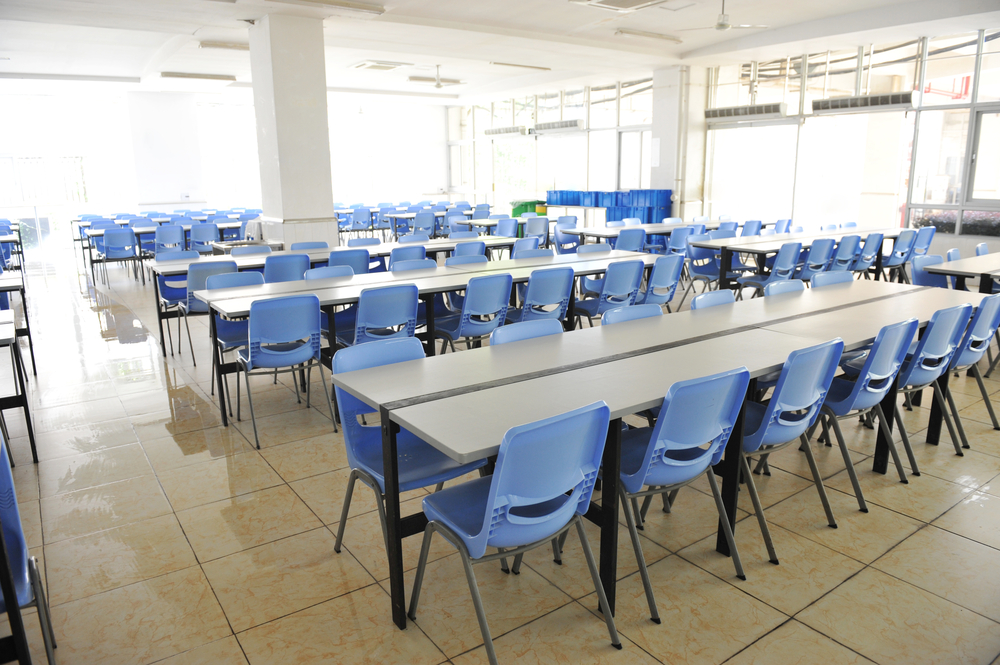
On average, 70 percent of San Diego County children who receive free meals during the school year aren’t showing up to claim summer lunches provided by local school districts with funds from the U.S. Department of Agriculture. | Photo Credit: Shutterstock
By Megan Burks
The school year is winding down and many parents are thinking about how to keep their children active this summer. But for 165,969 San Diego County parents whose kids qualify for free school lunches, the bigger question may be how to keep their children fed. When school and the subsidized lunches that come with it end, so do reliable meals for some low-income children.
Now local anti-hunger advocates are looking for new ways to help parents bridge the gap when free school lunches are off the table. In a recent report, the San Diego Hunger Coalition calls for lawmakers to expand a federal pilot program that gave families more food stamp dollars during breaks from school.
That’s because the program that already exists to bridge the summer meal gap doesn’t work as well as it should. Since the 1970s the U.S. Department of Agriculture has paid for low-income children to eat lunches at libraries and recreation centers during the summer. But those meal sites have always struggled to draw a crowd.
On average, 70 percent of San Diego County children who receive free meals during the school year aren’t showing up to claim summer lunches, according to the California Food Policy Advocates.
Parke Troutman, public policy and advocacy director at the Hunger Coalition, recently surveyed parents about why they weren’t getting their kids to the meal sites, which the San Diego Unified School District calls Summer Fun Cafés. He said the top reason was parents just don’t know about them.
“A lot of time parents are getting so bombarded with information that it doesn’t register,” Troutman said. He said schools typically program robocalls, send home flyers with students and enlist the media to get the word out.
Of those who did know about the program, most told Troutman they just didn’t have reliable transportation for their children to get to the lunch sites. The target population is within 130 percent of the Federal Poverty Level and most of the parents work.
The thinking now: Why not help children where they already are during the summer months – at home.
The summer food stamp pilot was an effort to do that. It gave about 40,000 families across eight states $30 or $60 a month via their electronic benefit transfer – or EBT – cards, which is how individuals receive and spend food stamp dollars. They could then spend the extra money to stock their refrigerators and pantries.
The pilot showed kids were less hungry and ate more fruits, vegetables and whole grains when given assistance to eat at home. And it cost less per child – the $30 or $60 monthly stipend – than funding community meal sites, which cost about $70 per child during the same time period.
But there are currently no plans to expand the program – a feat that could prove difficult given concern about the cost of nutrition programs generally. Since 1990, the number of food stamp recipients has grown by 7.5 million and the average monthly benefit has gone up $27, adjusted for inflation.
The food stamp program, formally called the Supplemental Nutrition Assistance Program, was the source of a years-long Congressional battle over the Farm Bill, which sets spending on food assistance and agriculture. It was reauthorized in February after lawmakers settled on cutting $8.6 billion over the next decade.
But Troutman said lawmakers could expand the summer food stamp pilot to California and other states through their annual appropriations process or through next year’s Child Nutrition Act reauthorization.
“These kids are our future and we need to take collective responsibility for feeding them,” Troutman said.
